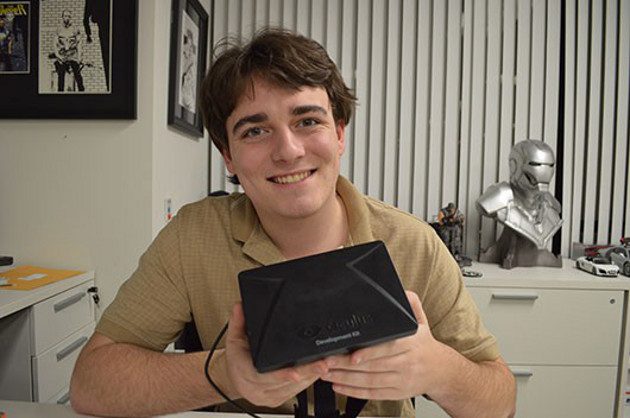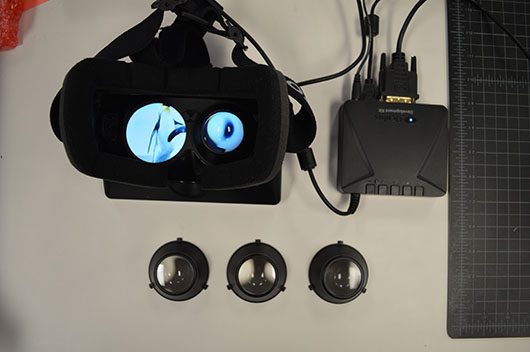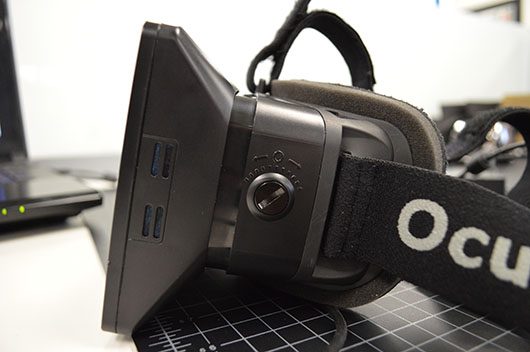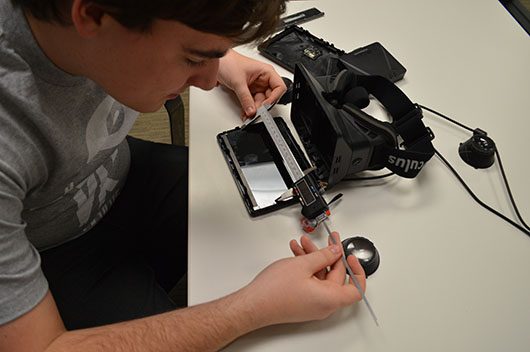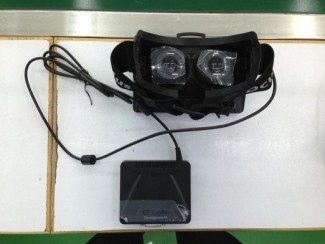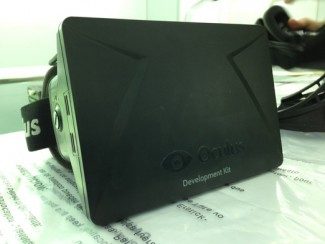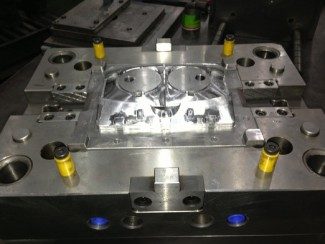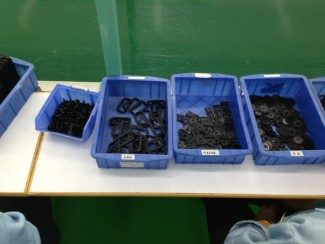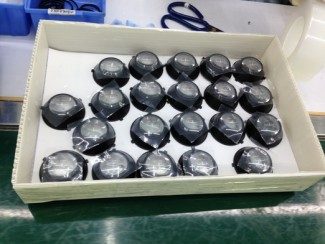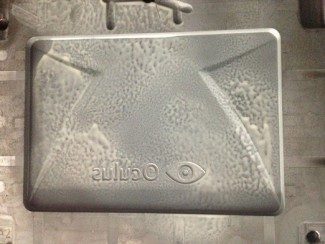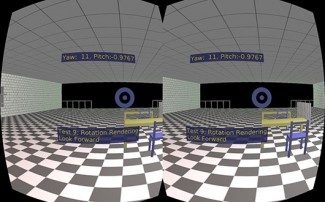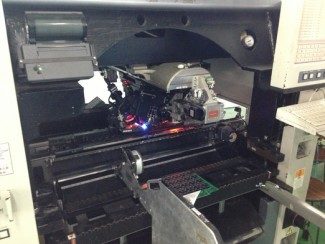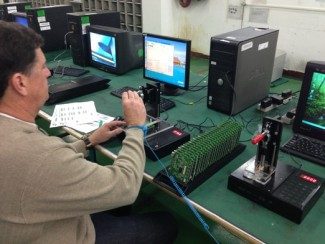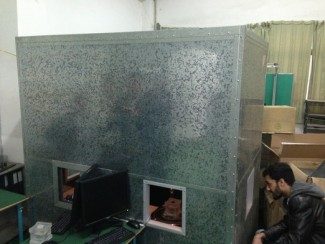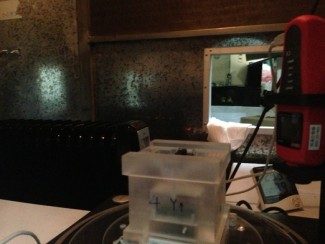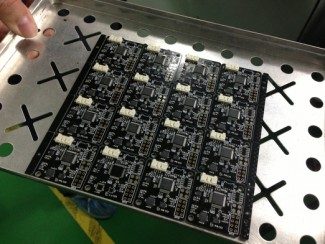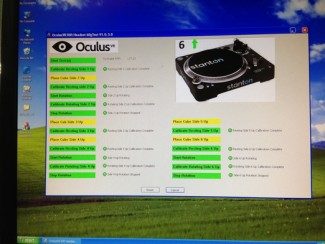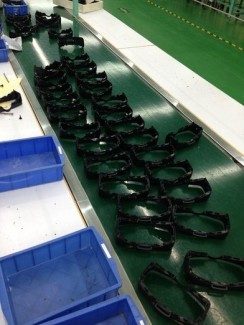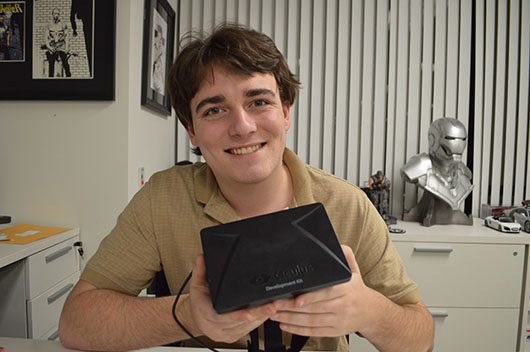
Oculus Inc. just dropped a big update on the Oculus Rift VR headset. Highlights include a successful initial pilot run at the factory, ‘eyecups’ to help those with less than perfect vision, an adjustable assembly if you want to use your glasses, and lots of behind-the-scenes info from the factory floor in China. Perhaps the best news of all is that the Oculus Rift is on schedule to ship the first batch in March!
Oculus Rift Eyecups for Vision Correction
The Oculus Rift was delayed back in November when the company learned that the display to be used had been discontinued This meant they had to source a new screen, setting the schedule back a few months. They took the opportunity to add a few last minute changes to the Rift which will benefit those who need corrective vision.
According to their latest update, the Oculus Rift will ship with three removable ‘eyecups’ which can be swapped according to your visual needs.
-
If you have great vision (or you wear contacts), your vision inside the Rift will match your vision in real life. You’ll use eyecup set A.
-
If you’re farsighted, you’ll have no vision problems in the Rift because the optics are focused at infinity (which makes your brain think it’s looking at something far away). You’ll also use set A.
-
If you’re nearsighted, the additional eyecups, B and C, allow you to see inside the Rift as if you were wearing glasses. Again, this is because the lens cups change the focal distance. If you’re moderately nearsighted, you’ll use set B. If you’re very nearsighted, you’ll use set C.
Oculus notes that this isn’t a perfect solution, “the B and C cups won’t be ideal for everyone, but we’re hoping that they help some of the nearsighted developers. If you have other eye issues like astigmatism, the additional lens cups may not be sufficient.” They company says it’s working on a better solution for the consumer version, but they were glad to be able to include the eyecups at the last minute to help what portion of the developer userbase they could.
Adjustable Housing
For some time people have been wondering what the dials on the side of the developer kit were for. Some speculated that it would be a diopter adjustment, but that seemed unlikely given its position. It has now been made clear, the Oculus Rift has an adjustable assembly which allows the screen to move closer or further from the user’s eyes.
The B and C eyecups are shorter because they change the focal length. This means that they’ll be further away from your eyes, resulting in a lower field of view. With the side assembly adjustment you can bring the screen and the eyecups closer to your eyes to recoup the field of view. The adjustment can also be used to make room for glasses or a large brow and I have a feeling that it’ll be useful for hardware modders as well.
Behind-the-scenes at the Oculus Rift Factory
Palmer Luckey and Oculus team members apparently flew directly from CES 2013 (Las Vegas) to the Oculus Rift factory (China) where they stayed for two weeks to oversee the pilot run, the final test before mass production.
Manufacturing is a tough business, whether it’s in China or the United States. You can’t whip something up in CAD, email the files over to a factory, and receive your perfect finished product in the mail. Unexpected issues always pop up, and concepts can be miscommunicated. In the end, nothing beats having boots on the ground where the product’s actually being built, so your team can be analyzing problems and creating solutions on the fly.
The factory has successfully completed the pilot run which resulted in 40 complete Oculus Rift units. Some of these units are likely to stay with Oculus for testing, but I’d expect some to go out to top priority developers like Valve, Unity, Unreal, Chris Roberts, and others. Oculus Inc. says that they are on schedule for mass production and shipping the first batch of developer kits in March. For more detail, see the Oculus Rift Release Date section of this page.
There is lots of interesting detail regarding the manufacturing process — tooling, testing and calibrating the headtracker, assembly, and quality assurance — which I’d encourage you to check out in the original update from Oculus if you are interested. For those who’d rather get a visual rundown, here’s a gallery:

